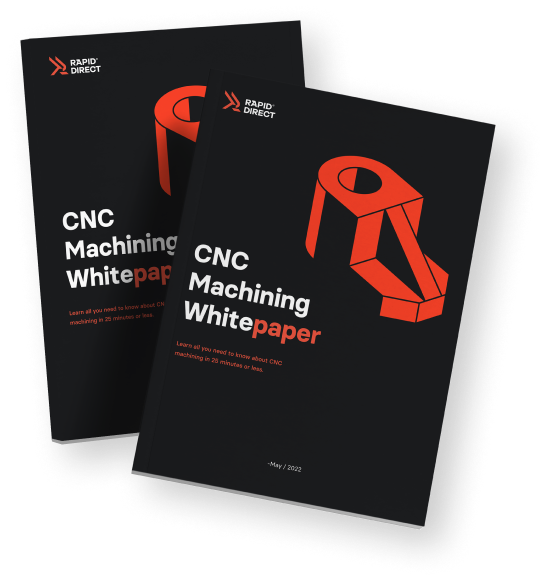Even with the advent of new technologies such as 3D printing, CNC machining remains one of the most economical ways to produce goods on demand. This is attributed to the numerous benefits that CNC machining offers businesses, including high-quality parts with low tolerance and precision, as well as fast lead times. The fast lead time ensures that businesses receive their ordered parts promptly, thereby reducing time to market.
So, what are the factors impacting CNC machining costs? How do I save the costs? Read on as we provide you with great information that answers these questions.
What is CNC Machining?
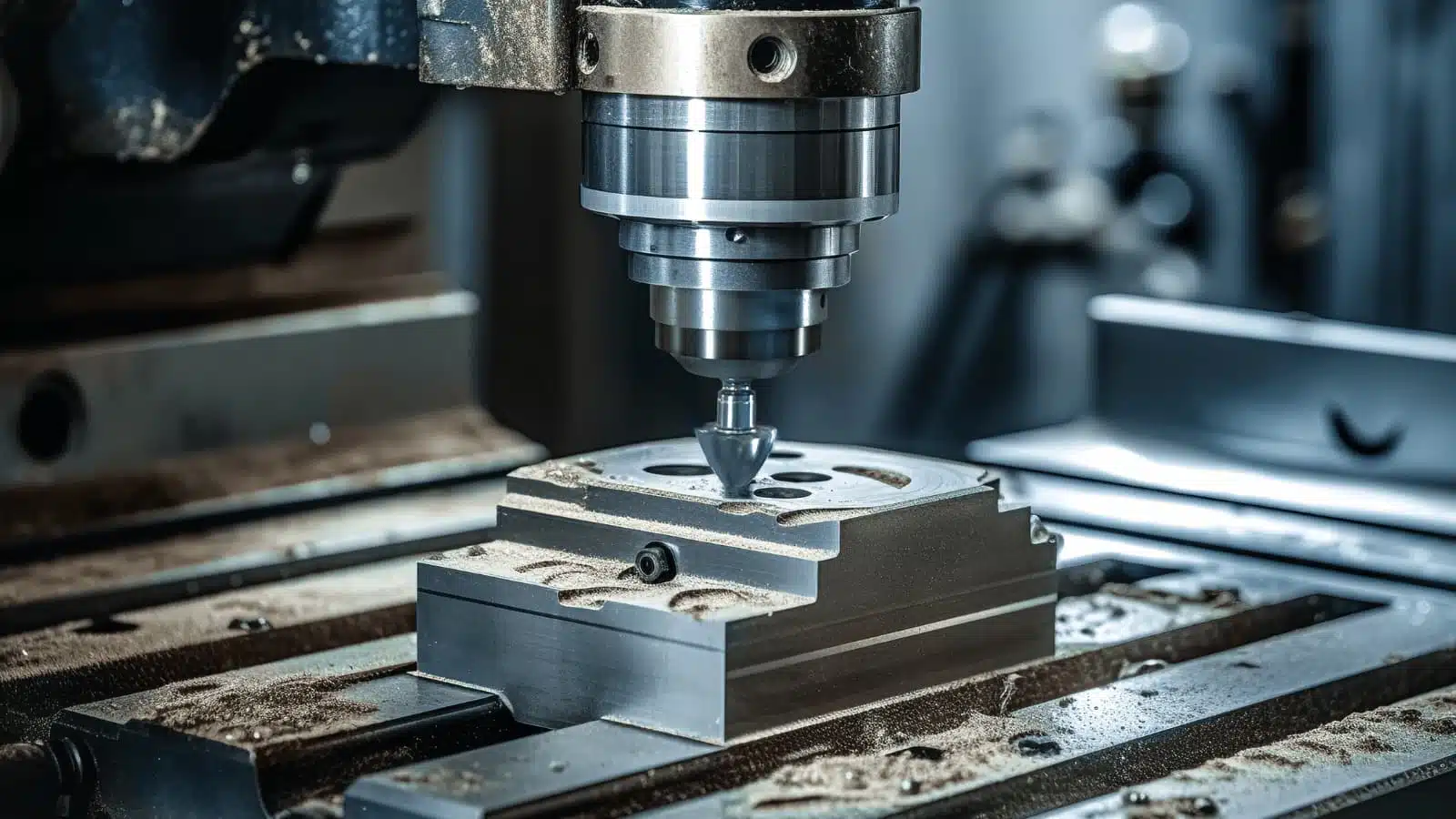
Having established the importance of understanding CNC machining costs, it’s essential to delve deeper into the core of CNC machining itself. CNC, or computer numerical control machining, is a manufacturing technique that uses automated, high-speed cutting tools to form shapes from metals and plastics. Lathes, routers, and milling machines with 3, 4, and 5 axes are examples of standard CNC machines.
The main distinction between them is how they cut the workpiece or part. For example, the workpiece can move in a linear direction with the tool, rotate and move with the tool, or the cutting tool and workpiece can move simultaneously.
A computer-aided design, or CAD, model is used to create part geometry information for the machining. Besides, an expert machinist programs a CNC machine’s tool paths according to the geometry of the finished machined parts.
Almost every industry, including medical, aerospace, electronics, and robotics, needs custom CNC machined parts. CNC machines can cut nearly any metal alloy and stiff plastic with great precision and reproducibility.
Factors Influencing CNC Machining Costs
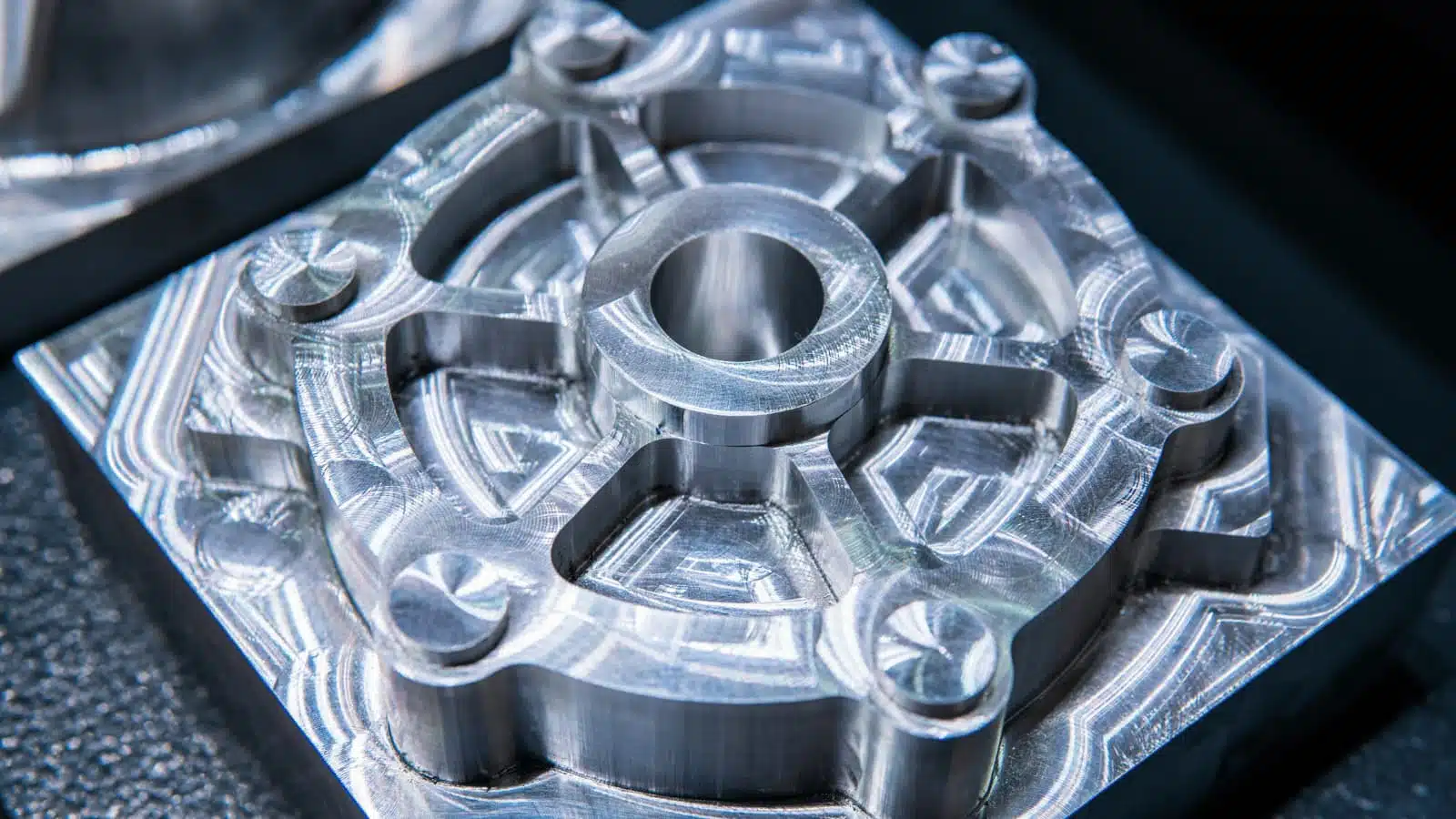
CNC machining is a complex process involving various aspects that directly impact the overall cost. Understanding these factors is crucial for businesses looking to optimize their operations and manage expenses effectively. Let’s examine the main factors that affect machining costs:
Material Selection
The material selection has a significant impact on the overall cost of a CNC machining project. Factors like material properties, machinability, and market pricing significantly influence expenses. High-performance materials such as titanium or stainless steel, prized for their strength and durability, are costlier than plastics or softer metals. The ease of machining also plays a crucial role; harder materials increase tool wear and machining time, escalating costs.
Moreover, the raw material market impacts prices, with availability and demand fluctuations affecting costs. Additionally, the level of post-processing required for certain materials to achieve desired finishes can further add to the expense. Balancing material attributes with cost efficiency is essential in CNC machining to ensure both optimal performance and economic feasibility.
Complexity of the Design
Regarding the cost of cnc machined parts or components, parts complexity is a major factor. This complexity manifests in various forms, each adding to the production expense in distinct ways. Complex geometries, for example, necessitate intricate CNC programming and precision control, extending setup times and often requiring the use of more costly multi-axis machining centers.
The need to achieve tight tolerances is another facet where complexity adds to the cost. Attaining these precision levels demands not only advanced machinery but also highly skilled operators. This precision-centric process inherently slows down the machining operation, thereby increasing the time and resources spent on each part.
Additionally, intricate features in a design may require specialized tools and methods. These specialized resources often come at a premium, both in terms of the cost of the tools themselves and the additional time needed to employ them effectively.
As a result, the more complex a design, the more significant the impact on the machining costs, stemming from a combination of advanced equipment usage, skilled labor requirements, and extended machining times.
Volume of Production
The batch size and volume in CNC operations have a direct impact on machining costs. This impact has a dual nature. As production volumes increase, economies of scale start to apply, making each part less expensive due to the spread of fixed charges like setup and tooling over more units.
However, the balance between setup time and volume is critical. In large-volume production, the per-part expense for setup is much lower, utilizing setup time more effectively and decreasing overall charges. On the contrary, smaller batches mean that setup costs and times represent a larger portion of the total charge, increasing the price per component. Finding the right balance between volume and setup efficiency is crucial in CNC machining.
Manufacturers strive to find a production volume that benefits from economies of scale without leading to excessive inventory or logistical issues. Optimizing production volume is thus a strategic choice that significantly influences the efficiency of CNC machined parts in terms of financial outlay.
Machine Operating Time
When calculating CNC design costs, machining time is a crucial component. Essentially, the longer it takes to machine a part, the higher the cost. This time includes not just the actual cutting or cycle time but also the setup time, which involves tool changes and preparation, as well as the overall efficiency of the production process.
The cycle time, which is the time spent in the actual machining of the component, can vary significantly based on the complexity of the part and the type of CNC machine used. Complex parts requiring detailed work will naturally take longer to machine, increasing the cycle time and thus the cost. Similarly, the setup time can be a substantial portion of the overall machining time, especially for smaller production runs where the setup is a significant part of the process.
Labor Costs
CNC machining expenses are driven mainly by labor costs, which include the pay for CNC machining engineers. Accurate and productive machining requires proficient operators knowledgeable in CNC setup, programming, and operation. Additional labor expenses may be associated with labor-intensive activities or intricate part requirements. The key to reducing CNC machining costs is striking a balance between budget control and using skilled personnel.
CNC Machine Costs
Two factors influence machining expenses: the upfront cost of a CNC machine and its expected yearly usage, typically around 5000 hours. Machinists determine machine shop rates, commonly known as the machining charge per hour, by dividing the price of CNC machines by their total yearly usage hours. Below is a table that compares the prices of various types of CNC machines.
| CNC Machine Type | Description | Approximate Price Range (USD) |
| CNC Milling Machine | Used for cutting and drilling operations on metal | $10,000 – $60,000 |
| CNC Lathe | Primarily used for turning operations | $15,000 – $45,000 |
| CNC Router | Ideal for cutting softer materials like wood | $3,000 – $20,000 |
| CNC Plasma Cutter | Used for cutting metal and other materials | $8,000 – $30,000 |
| CNC Laser Cutter | Precision cutting tool for various materials | $10,000 – $70,000 |
| 5-Axis CNC Machine | Advanced machine for complex geometries | $75,000 – $250,000 |
| CNC Swiss Machine | Specialized for precision and complex parts | $30,000 – $100,000 |
| CNC Grinding Machine | Used for finishing operations | $20,000 – $80,000 |
While evaluating CNC machining costs, it’s worth considering RapidDirect’s CNC machining services. RapidDirect offers a unique blend of cost efficiency and high-quality manufacturing, leveraging advanced technology and expert craftsmanship. Their streamlined process ensures competitive pricing while maintaining exceptional standards, making them an ideal choice for diverse CNC machining needs.
Additional Costs
The total expenses estimate may be impacted by additional costs related to CNC machining procedures.
Machine Tools
When custom CNC fabrications are required, machine shops often need to use specific tool bits. While these tools remain with the shop after production, clients may still bear a portion of the machine tool costs. This is primarily due to the wear and tear experienced by the tools during production, a factor that becomes particularly prominent when working with materials of high hardness.
The costs involved in purchasing, maintaining, and replacing these cutting tools or tooling are substantial and directly impact overall machining expenses. The life of a cutting tool and the time taken for tool changeovers are critical factors; they not only affect the cost but also the production efficiency. Regular wear and occasional breakage of tools necessitate frequent replacements, adding to the expense. Therefore, careful selection, consistent upkeep, and optimization of machine tools are key strategies to mitigate these costs.
Surface Finish
Selecting a surface finish for CNC machined parts is crucial for meeting functional and aesthetic requirements, but it also significantly impacts costs. More intricate finishes demand additional machining steps, specialized tools, and extended time, increasing expenses. Conversely, simpler finishes are more cost-effective. Balancing desired outcomes with cost implications is essential in design and production planning, especially for materials requiring specific finishing techniques.
Take surface finish options for aluminum as an example below.
| Material | Surface Finish | Quantity | Unite Price (Estimated) | Lead Time (Estimated) |
| Aluminum | As Machined | 1 | $15 – $30 | 2 – 5 days |
| Aluminum | Anodizing | 1 | $20 – $40 | 3 – 7 days |
| Aluminum | Bead Blasting | 1 | $15 – $35 | 2 – 6 days |
| Aluminum | Polishing | 1 | $25 – $50 | 3 – 7 days |
| Aluminum | Powder Coating | 1 | $30 – $60 | 4 – 8 days |
| Aluminum | Electroplating | 1 | $35 – $70 | 5 – 10 days |
| Aluminum | Brushing | 1 | $20 – $45 | 3 – 7 days |
Note: Please note that the values provided above are for reference purposes only. For detailed and specific information, we encourage you to get in touch with RapidDirect directly.
Timing
Timing in CNC machining not only involves the efficiency of production but also the urgency of client demands. While advanced, high-speed machinery can reduce production time, thereby potentially lowering overall costs, the equation changes when expedited manufacturing is required. Clients requesting faster turnaround times often face expedited fees, reflecting the additional resources and prioritization needed to meet shorter deadlines. This can significantly increase the cost, especially for high-volume or complex orders. Balancing the speed of production with these expedited costs is crucial for manufacturers and clients alike, impacting the final cost of CNC machined parts.
Shipping Costs
Shipping cost is often influenced by several factors, including the size and weight of parts, as heavier items incur a higher shipping cost. Also, shipping method and packaging are other factors that determine how much one pays for shipping CNC machined parts and, by extension, the total cost of CNC machining.
Strategies for Reducing CNC Machining Costs
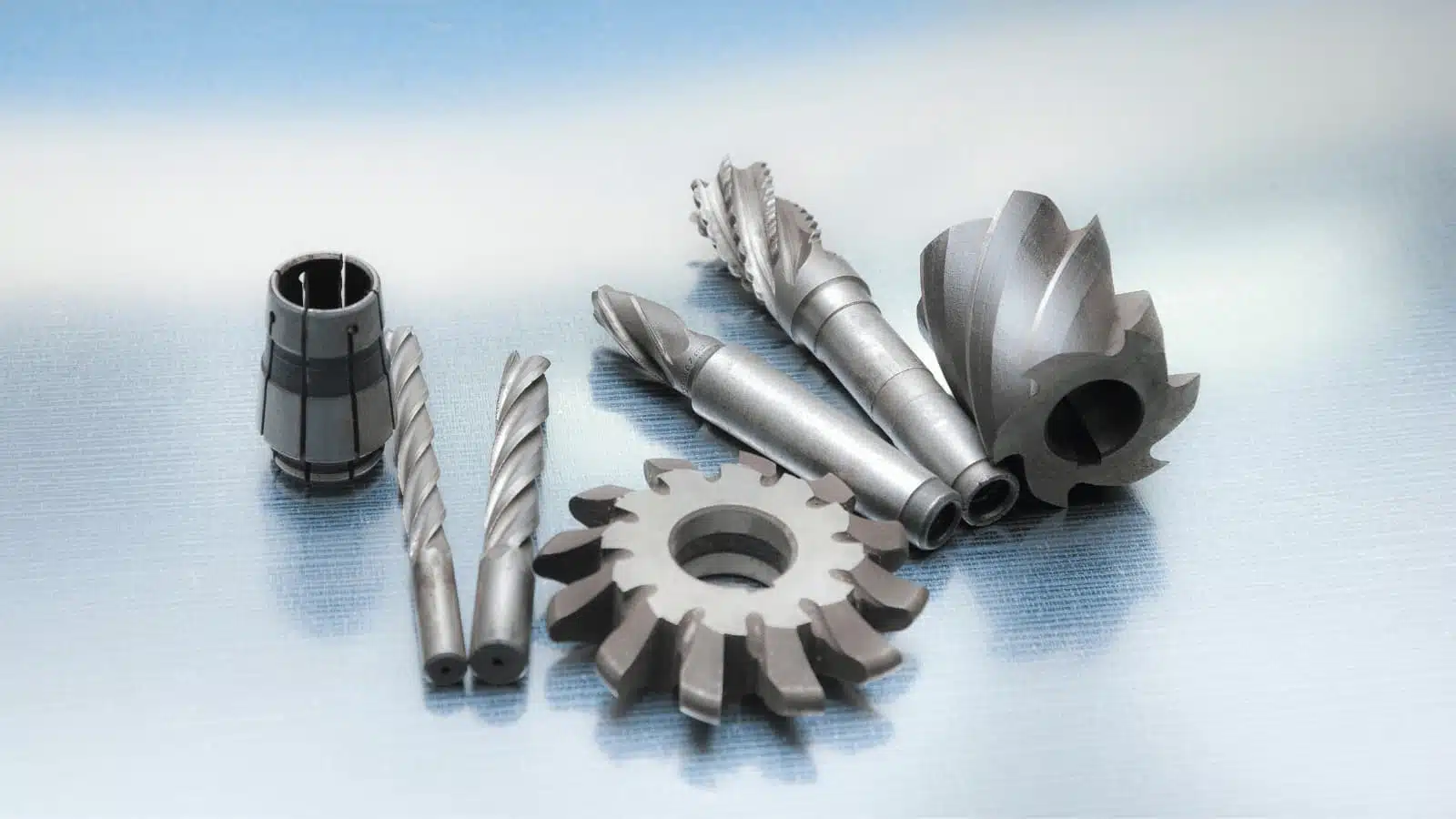
To reduce CNC costs, a comprehensive strategy that maximizes many areas of the production process is necessary. Besides, manufacturers can optimize their cost-optimization efforts and attain increased efficiency by putting these cost-saving strategies into practice:
Optimizing Design for Manufacturability
Designing parts for manufacturing is essential to cutting costs when it comes to the different applications of CNC machining.
- This involves designing parts with simpler geometries to reduce complex machining operations and tool wear, thereby shortening production time and costs.
- Adjusting tolerances to practical levels can also significantly cut down expenses. Tighter tolerances often demand more precise and thus costlier machining processes.
- Thoughtful material selection and avoiding designs that require extensive and expensive tooling are also key.
- Engaging with machining experts during the design phase ensures the design is not only manufacturable but also done cost-effectively.
These measures not only streamline the manufacturing process but also optimize material usage and reduce waste. They bring substantial overall savings while maintaining the quality and functionality of CNC machined components.
Material Selection and Cost-Benefit Analysis
Choosing materials that balance affordability with functional requirements can substantially lower raw material costs. Standardizing materials across product lines minimizes waste, optimizes machining efficiency, and simplifies procurement. Key considerations in material selection include cost, availability, and machining suitability. This careful approach not only reduces direct material expenses but also enhances overall operational productivity.
Below is a table showing the material selected against the surface finish and the estimated price.
| Material | Surface Finish | Quantity | Unit Price (Estimated) | Lead Time (Estimated) |
| Aluminum | As Machined | 1 | $30 – $50 | 2 – 5 days |
| 10 | $25 – $45 | 5 – 10 days | ||
| 100 | $20 – $40 | 10 – 20 days | ||
| 1000 | $15 – $35 | 20 – 40 days | ||
| Stainless Steel | As Machined | 1 | $40 – $60 | 3 – 7 days |
| 10 | $35 – $55 | 7 – 14 days | ||
| 100 | $30 – $50 | 15 – 30 days | ||
| 1000 | $25 – $45 | 30 – 60 days | ||
| Steel | As Machined | 1 | $35 – $55 | 2 – 6 days |
| 10 | $30 – $50 | 6 – 12 days | ||
| 100 | $25 – $45 | 12 – 24 days | ||
| 1000 | $20 – $40 | 24 – 48 days | ||
| Brass | As Machined | 1 | $30 – $50 | 2 – 5 days |
| 10 | $25 – $45 | 5 – 10 days | ||
| 100 | $20 – $40 | 10 – 20 days | ||
| 1000 | $15 – $35 | 20 – 40 days | ||
| Copper | As Machined | 1 | $35 – $55 | 3 – 7 days |
| 10 | $30 – $50 | 7 – 14 days | ||
| 100 | $25 – $45 | 15 – 30 days | ||
| 1000 | $20 – $40 | 30 – 60 days | ||
| ABS | As Machined | 1 | $50 – $100 | 2-5 days |
| 10 | $20 – $40 | 5-10 days | ||
| 100 | $10 – $20 | 10-15 days | ||
| 1000 | $5 – $10 | 15-20 days | ||
| Nylon | As Machined | 1 | $60 – $120 | 2-5 days |
| 10 | $30 – $60 | 5-10 days | ||
| 100 | $15 – $30 | 10-15 days | ||
| 1000 | $10 – $20 | 15-20 days | ||
| POM (Delrin) | As Machined | 1 | $70 – $140 | 2-5 days |
| 10 | $40 – $80 | 5-10 days | ||
| 100 | $20 – $40 | 10-15 day | ||
| 1000 | $15 – $30 | 15-20 days |
Note: Please note that the values provided above are for reference purposes only. For detailed and specific information, we encourage you to get in touch with RapidDirect directly.
Avoid Multiple Surface Finishes
Certain materials require less surface polish because they are highly machinable. Aluminum is one type of such material. When these kinds of materials are available and feasible, it’s advisable to use them. It is important to note that finishing processes increase CNC machining costs. So, in situations where you can use As-Machined finishes, it is best to use it as it is of the best CNC machined finish.
Nonetheless, specific surface treatments are necessary to enhance a component’s qualities. These include chemical film, bead blasting, electropolishing, and anodizing. But only use these finishes when required.
Another factor that drives up the cost of surface finishing is using several finishes on a component’s many surfaces. Certain project managers, for instance, use chromium plating in some areas and bead blasting in others. Thus, if possible, try to maintain consistent finishing criteria across the component.
Leveraging Economies of Scale
An increase in production volume will result in an exponential reduction in the cost of a CNC machining process. Let’s attempt to see this cost-cutting proposal from a more favorable angle. Let’s say we have a $40 single-unit part. At 10 pieces produced, the unit costs of this part will decrease to roughly $12.5.
Similarly, with 100 parts, the part cost per unit will decrease to roughly $8.79. In conclusion, the cost per unit part can be decreased by more than 60% by increasing manufacturing orders from one unit to 100 units. Because every variable involved in the process stays the same, drops happen. That is to say, whether manufacturing ten, fifty, or one hundred units of a component, the CAD design remains the same.
Additionally, selecting a separate machine configuration for different parts won’t be necessary. For the duration of the production process, the same parameters are chosen. To make maximum use of economies of scale, you should think about placing larger orders to benefit from these economies of scale.
Outsourcing vs In-house Production
When weighing options to reduce CNC machining costs, the decision between outsourcing and in-house production is pivotal. Opting for in-house production entails significant investments in purchasing CNC machines and hiring or training skilled operators, leading to substantial upfront and ongoing expenses. In contrast, outsourcing to a specialized manufacturer shifts the burden of equipment and labor costs to the service provider. You pay primarily for the service rendered, not for the maintenance of machinery or workforce.
Outsourcing CNC Machining Services with RapidDirect
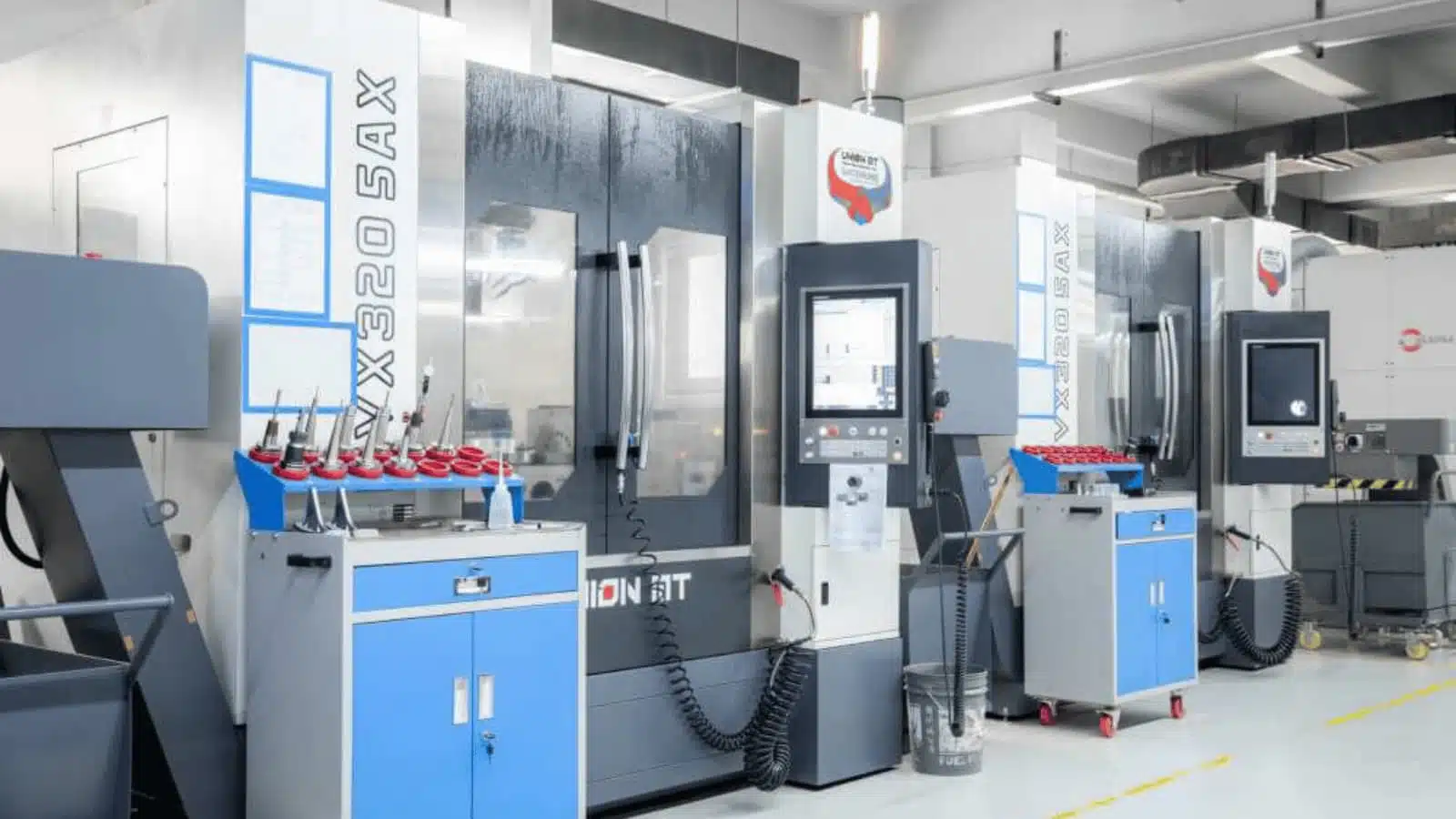
However, the choice of outsourcing location is critical. While outsourcing to firms in developed countries can be expensive, companies in regions with lower operational costs, like China, can offer competitive rates without compromising on quality.
For instance, Chinese companies like RapidDirect provide high-quality CNC machining services at a fraction of the cost compared to their counterparts in more developed economies. This makes outsourcing a viable option for reducing overall machining costs, especially for businesses looking to optimize budgets without sacrificing quality.
Your CNC machining cost calculation will be simple when you work with RapidDirect. Our fast-quoting platform allows you to receive your quotation nearly instantly. We review your design and provide feedback within a day.
We also have one of the fastest lead times in the industry, thus guaranteeing your products get to you on time. So why wait? Start working on your CNC machining project and get CNC quotes!
